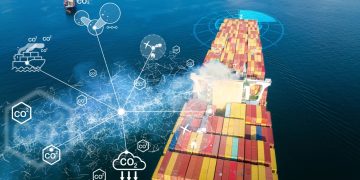DNV GL has issued updated Recommended Practice (RP) on the development and operation of LNG bunkering facilities. It is the first industry’s guidance on how to perform quality measurements and quantity metering of LNG fuel supply.
In order to continue meeting and supporting the market in its growing demand for cleaner fuels and versatile LNG applications, DNV GL has updated its RP for Development and operation of LNG bunkering facilities (DNVGL-RP-G105). The RP now includes a section dedicated to determining LNG quantity and its properties. The objective is to assist operators in addressing the large spread in properties, density and the calorific value among the available LNG sources globally.
This update is a key driver for the monetization of the LNG small scale distribution and infrastructure, helping to develop a more transparent and compatible market and to safeguard sustainable growth.
The RP enables the industry to understand the business impact of proper fiscal measurement. Gas from different sources with various compositions can result in substantial variation in energy content and burning properties. This may have implications for billing, the expected voyage distance and safe use in terms of operations.
“The specification of LNG as a marine fuel and required metering methodology has until now been a missing piece in the LNG as fuel puzzle,” says Martin Layfield, global segment leader of the Gas Value Chain, DNV GL.
“This new RP completes the picture and will provide a level playing field for the billing process of LNG and documentation around the gas quality.”
Elisabeth Tørstad, CEO of DNV GL – Oil & Gas, says “This RP aims to support the industry in the development and operation of safe LNG bunkering facilities and to ensure safety for people, the environment and compliance with regulatory targets.
”The RP is applicable to truck-to-ship, terminal-to-ship and ship-to-ship bunkering scenarios, as well as inland shipping and vessels not covered by the International Maritime Organization (IMO) regulations.
“LNG has proven to be a viable option as a bunkering fuel for ships and its use is set to soar over the next decade. As LNG is a hazardous substance, and by its nature has different risk properties than traditional fuel, the updated RP also elaborates further on how to establish proper safety zones including guidance on techniques and risk methodologies,” adds Layfield.
The RP also addresses the risk evaluations that may be used for strategic considerations in the planning phase of an LNG bunkering facility project.
Management of the risks associated with LNG continues to be developed, especially as the fuel supply is not yet widely carried out on a routine basis around the world. This is addressed by DNV GL in an ongoing Joint Industry Project (JIP) to enhance understanding of the risks and hazards in small-scale LNG bunkering stations which aims to provide experimental data to validate/improve physical models and answer safety related questions. This will result in rigorous standards for safe design, siting, construction and operation of small-scale LNG bunkering stations.
You may download DNV GL Recommended Practice by clicking here
Source: DNV GL
In the onset, I was open with you propecia before and after has changed my existence. It has become much more fun, and now I have to run. Just as it is fabulous to sit.
































































